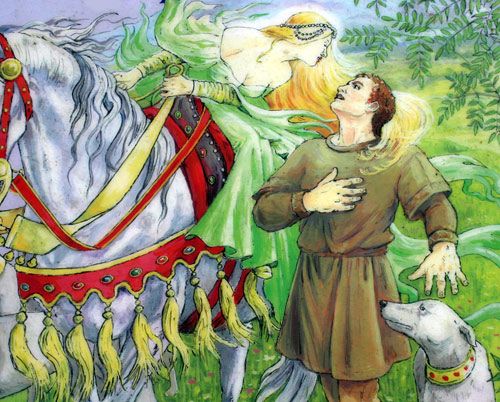Southern Scotland
 The area of the borders with it’s rolling hills, moorland and gentle valleys is home to some of the most impressive castles and towers of Scotland. It is divided into two regions; The Borders and Dumfries and Galloway.
The area of the borders with it’s rolling hills, moorland and gentle valleys is home to some of the most impressive castles and towers of Scotland. It is divided into two regions; The Borders and Dumfries and Galloway.
It has a colourful history, many great battles took place in the borders as well as the lawless Border Reivers who would raid the other side of the border, stealing sheep and whatever else. There were areas of debatable lands which neither Scotland or England owned. People of Southern Scotland had their own language, laws and traditions.
Rather than big cities this area is rural, small villages and farmland. Some impressive woodland, like that of Glentress. There are great stories that come from Southern Scotland. The reviving tales of people like Johnnie Armstrong, seers like Thomas Rymer. This is the area of Sir Walter Scott.
Visit the four Border abbeys founded by the medieval Canmore kings. The coast line has charming beaches and some amazing walks. Just below in Northumberland is Hadrians Wall. Vindolanda – the Roman fort and settlement is well worth a visit.
The Border Reivers - The Reivers Trail

Follow the footsteps of the Notorious Border Reiver familiy Clans who lived on both sides of the Borders.
Between the 14th and 16th Centuries the Borders were a pernament battle ground. Armstrongs, Douglas, Grahams, Kerrs, Maxwells, Nixons, Robsons, as well as many others - the legacy of the Reivers remains.
The Borders Clans were loyal to their kin rather than Scotland/England.
They were known the steel bonnets because of the helmets they wore. In the Borders they wore armour and rode on horse back.

The Marches
EAST MARCHES
England; gentlemen - Forsters, Selbies, Graies, Stroders, Swiners, Mustians. Surnames - Johnsons, Vardes, Ourdes, Wallisses, Stories, Armstronges, Dunnes, Flukes. Scotland; gentlemen - Humes, Trotters, Bromfields, Dixons, Craws, Crinstons.
MIDDLE MARCHES
England; gentlemen - Ogeles, Fenickes, Hernes, Withringtons, Medfords, Shafters, Ridlies, Carnabies. Surnames - Ridesdale - Halls, Hedleys, Andersons, Potts, Reades, Dunnes, Milburnes. Tindale - Charletons, Dodds, Milbornes, Robsons, Yaroes, Stapletons. Scotland; gentlemen - East Tividale - Carrs, Yongs, Pringles, Burnes, Davisons, Gillcries, Tattes. Liddesdale - Rudderfords, Carrs, Dowglasses, Trombles, Scottes, Piles, Robsons, Halls, Olivers, Ladlers, Armestronges, Elwoods, Nixons, Crosers, Turners, Fosters.
WEST MARCHES
England; gentlemen - Musgraves, Loders, Curwenes, Sawfelde. Surnames - Greames, Rutliches, Armestrongs, Fosters, Nixons, Tailors, Stories. Scotland; Maxwells, Johnsons, Urwins, Grames, Bells, Carlills, Battison, Litles, Carruders.
The families of the borders were controlled in a more drawn out version of the Clearances. Many moved to Ireland where becoming The Ulster Scots
Border Folklore
The Borders have a rich folkloric tradition; The Worm of Linton, Whuppity Stoorie, The Brownie to name a few.Thomas Rymer
Thomas of Ercildoune better known as Thomas Rymer was a medieval proffet. The story goes that one day as he sat beneath the Eildon Tree near Melrose he heard the tinkling of bells and the sound of horses hooves. Approaching him was a beautiful lady upon a white horse. The lady was the Queen of Elfland. Thomas fell under her spell and was taken to another world of Fairies deep in the Eildon Hills. He remained here for seven years and was given the gift of prophecy. When he returned to the moral world he foretold of certain events like, the death of King Alexander III.Sir Walter Scott wrote ballads about Thomas Rymer.

The Redcap
The redcap (or powrie) is a type of malevolent, murderous goblin found in Border folklore. He wassail to inhabit the ruined castles along the Scottish Anglo Border.Sorbie Tower
Some notable Castles and Towers of The Borders
Sorbie Tower

Hermitage Castle

Smailholm

Neidpath

Northumberland and Hadrians Wall
People often incorrectly think that Hadrians Wall separated Scotland and England. The wall existed before Scotland and England existed as separate Countries. It marked the north-west frontier of the Roman Empire, positioned because the landscape offered a natural defence.
Language/Dialect
The language spoken in the Borders is the Scots language, also known as Scotch. This became generally known as Borders Scots.In the 19th century many of the great Border Ballads were collected and printed. For the most part, the texts were either set in standardised Scots or even Anglicised. The following example Dick o the Cow appeared in Sir Walter Scotts Minstrelsy of the Scottish Border (1802-3) but gives a flavour of the content and style of a Border ballad:
Now Liddesdale has layen lang in,
There is na ryding there at a;
The horses are a grown sae lither fat,
They downa stir out o the sta.
Fair Johnie Armstrang to Willie did say
Billie, a riding we will gae;
England and us have been lang at feid;
Ablins well light on some bootie.
Then they are come on to Hutton Ha;
They rade that proper place about;
But the laird he was the wiser man,
For he had left nae gear without.
For he had left nae gear to steal,
Except sax sheep upon a lee:
Quo Johnie Id rather in England die,
Ere thir sax sheep gae to Liddesdale wi me.
The Border Abbeys
The Scottish Borders are home to a number of ruined, yet magnificent Abbeys, which were all founded in the 12th Century. The best known four are Jedburgh, Melrose, Kelso and Dryburgh Abbey. The Abbeys were founded by King David I of Scotland in the 12th Century.
The closeness of the Abbeys was a message of power. They were attacked many times, particularly in a time known as 'The Rough Wooing'.
St Ninians Chapel

